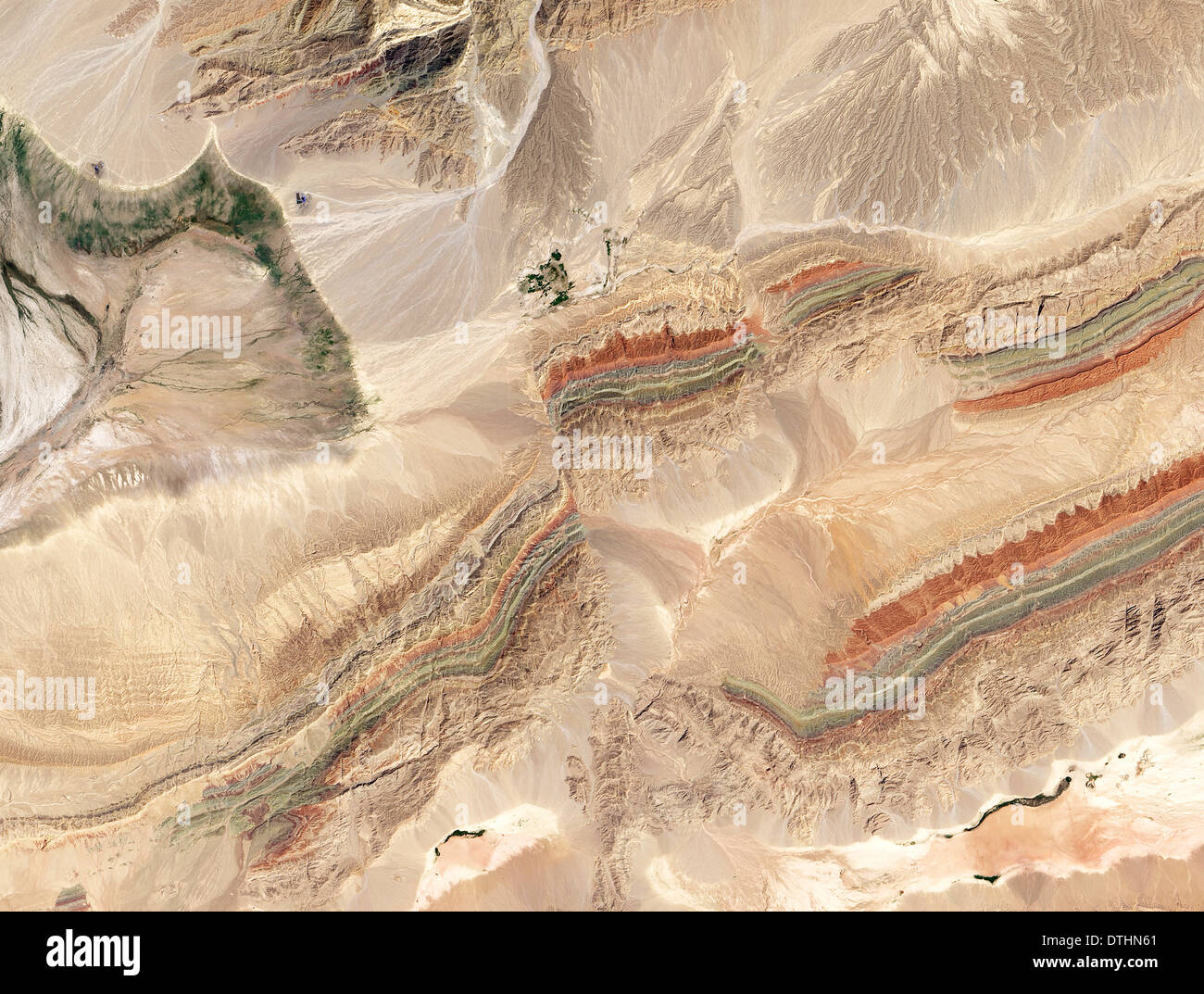fold and thrust belts in China as seen from NASA's Landsat 8 satellite

Image details
Contributor:
B.A.E. Inc. / Alamy Stock PhotoImage ID:
DTHN61File size:
27 MB (2 MB Compressed download)Releases:
Model - no | Property - noDo I need a release?Dimensions:
3530 x 2671 px | 29.9 x 22.6 cm | 11.8 x 8.9 inches | 300dpiMore information:
Piqiang Fault. Just south of the Tien Shan mountains, in northwestern Xinjiang province, a remarkable series of ridges dominates the landscape. The highest hills rise up to 1, 200 meters (3, 900 feet) above the adjacent basins, and they are decorated with distinctive red, green, and cream-colored sedimentary rock layers. The colors reflect rocks that formed at different times and in different environments. The red layers near the top of the sequence are Devonian sandstones formed by ancient rivers. The green layers are Silurian sandstones formed in a moderately-deep ocean. The cream-colored layers are Cambrian-Ordovician limestone formed in a shallow ocean. The Operational Land Imager (OLI) on the Landsat 8 satellite captured this view of the Keping Shan thrust belt on July 30, 2013. The ridges are oriented northeast to southwest and stretch from Kashgar to Aksu, China. When land masses collide, the pressure can create what geologists call “fold and thrust belts.” Slabs of sedimentary rock that were laid down horizontally can be squeezed into wavy anticlines and synclines. Sometimes the rock layers break completely, and older layers of rock pile up on top of younger layers. This type of break, known as a thrust fault, formed the series of ridges seen in the images above. Another type of fault is visible as well. In two areas, the ridges are noticeably offset by a strike-slip or “tear” fault. The top image shows Piqiang Fault, a northwest trending strike-slip fault that runs roughly perpendicular to the thrust faults for more than 70 kilometers (40 miles). The colored sedimentary rock layers are offset by about 3 kilometers (2 miles) in this area.